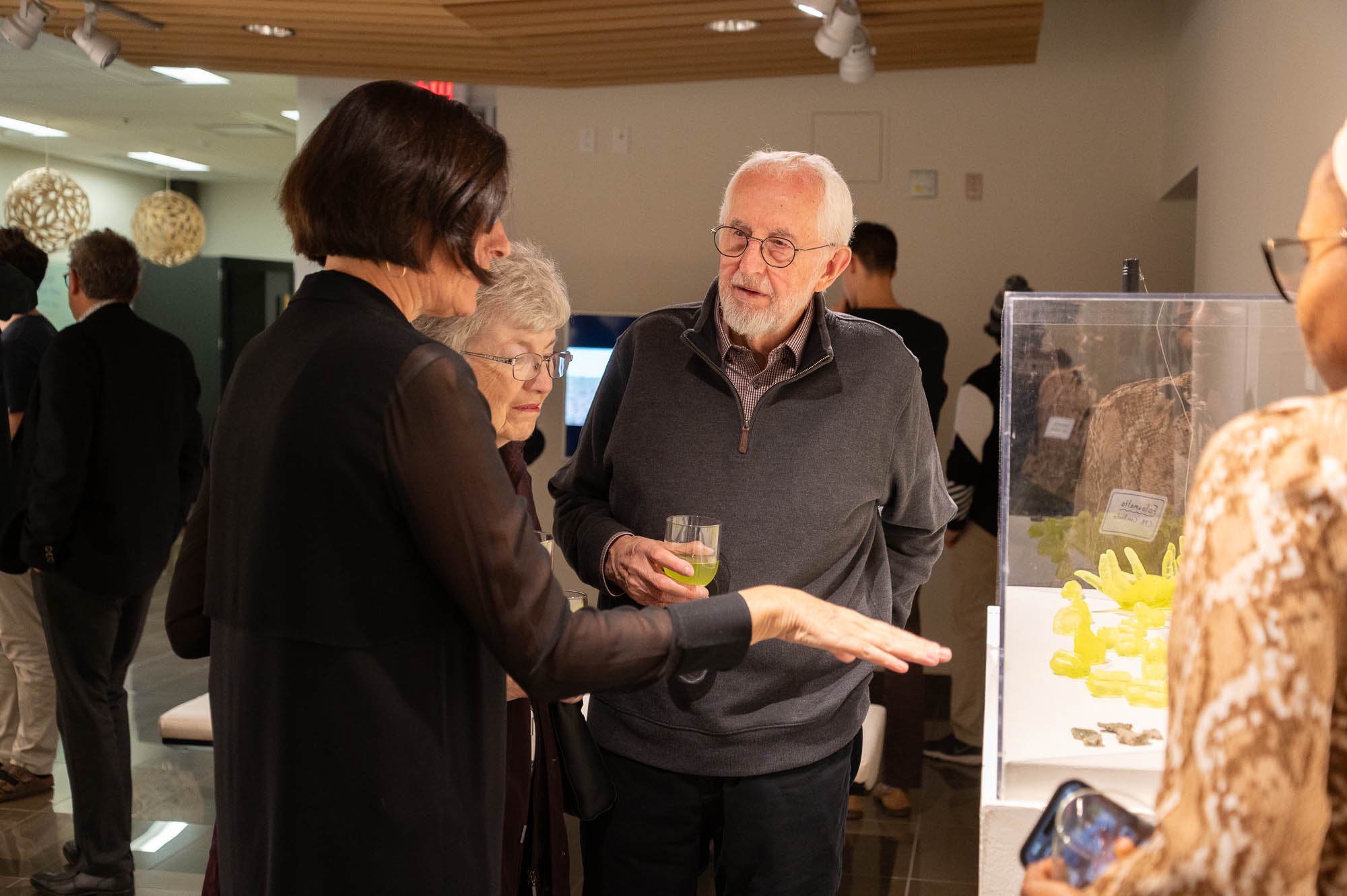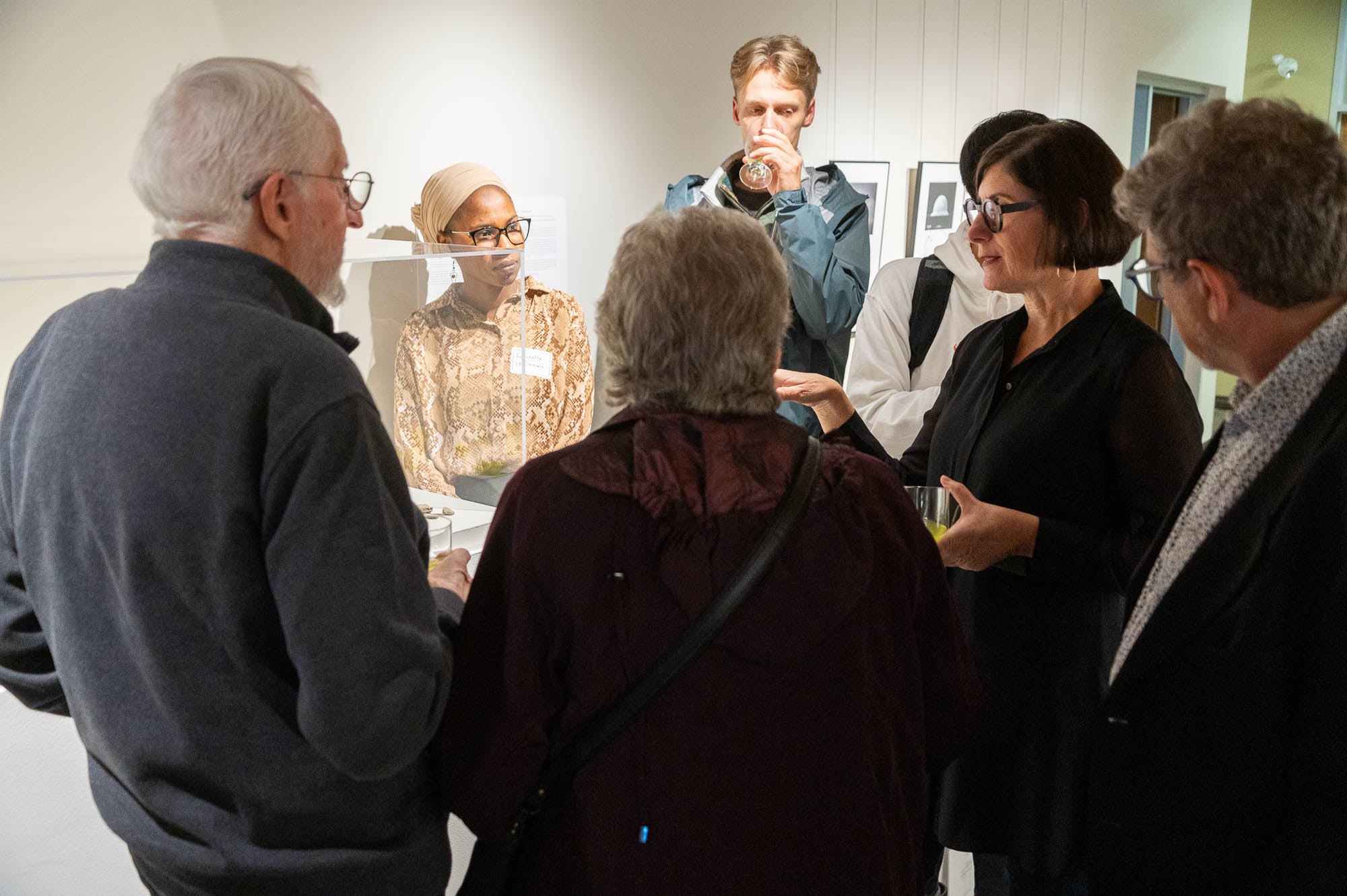On November 8, the Conrad Grebel University College community had the pleasure of welcoming artist Mary Kavanagh to speak about her exhibition, Trinity, Then and Now, to Grebel students, staff, and faculty at Community Supper.

Trinity, Then and Now brings to light the devastating consequences and legacy of the Trinity atomic bomb test which took place in the desert of New Mexico on July 16, 1945, leading to the horrific bombings of Hiroshima and Nagasaki. The exhibition is part of Kavanagh’s much larger body of work titled Daughters of Uranium – a decade-long investigation into the intergenerational trauma and irreversible ecological, psychological, and physical toll caused by nuclear testing and science.
Kavanagh introduced her art display to Community Supper guests with an essay written about her work by art critic Jayne Wilkinson, titled A Radioactive Domestic. Set alongside a slideshow of archival photographs and snapshots, she read an excerpt from Wilkinson’s essay describing her structuring of nuclear testing and warfare as a “totalizing concept” rather than as a specific point in time or historical event.

Following the talk, the audience was invited to join Kavanagh in the Grebel Gallery for a public meet and greet event, which offered guests an opportunity to ask questions about her art and about her extensive research on nuclear violence.
The exhibition follows a narrative beginning with the construction of the first atomic bomb to the catastrophic ruins of post-war suburbs, serving as both a critique and reminder of the violent implications of militaristic attitudes, aesthetics, and behaviours perpetuated by the composition of nuclear weaponry.
Every aspect of Kavanagh’s work is executed thoughtfully and intentionally. A display case in the Gallery showcases pieces of trinitite formed in the aftermath of the Trinity blast. Beside the trinitite, fluorescent sculptures made from uranium glass are formed into shapes of various symbols, from Yucca seed pods - a plant native to New Mexico where the first atomic test took place, to the delicate hands of an artist. Each sculpture emits a phosphorescent glow under a black light due to the unique properties of uranium oxide.
A documentary plays in the background, revealing a collection of diverse interviews with those visiting the New Mexico test site, harshly disrupted by clips and footage of the construction leading up to the first test.

Kavanagh offers audiences her unique wisdom,
Trinity, Then and Now is on display in the Grebel Gallery until February 2024. Those interested in booking a group or class visit are invited to contact the Centre for Peace Advancement Coordinator, Fatoumatta Camara (cpacoordinator@uwaterloo.ca).